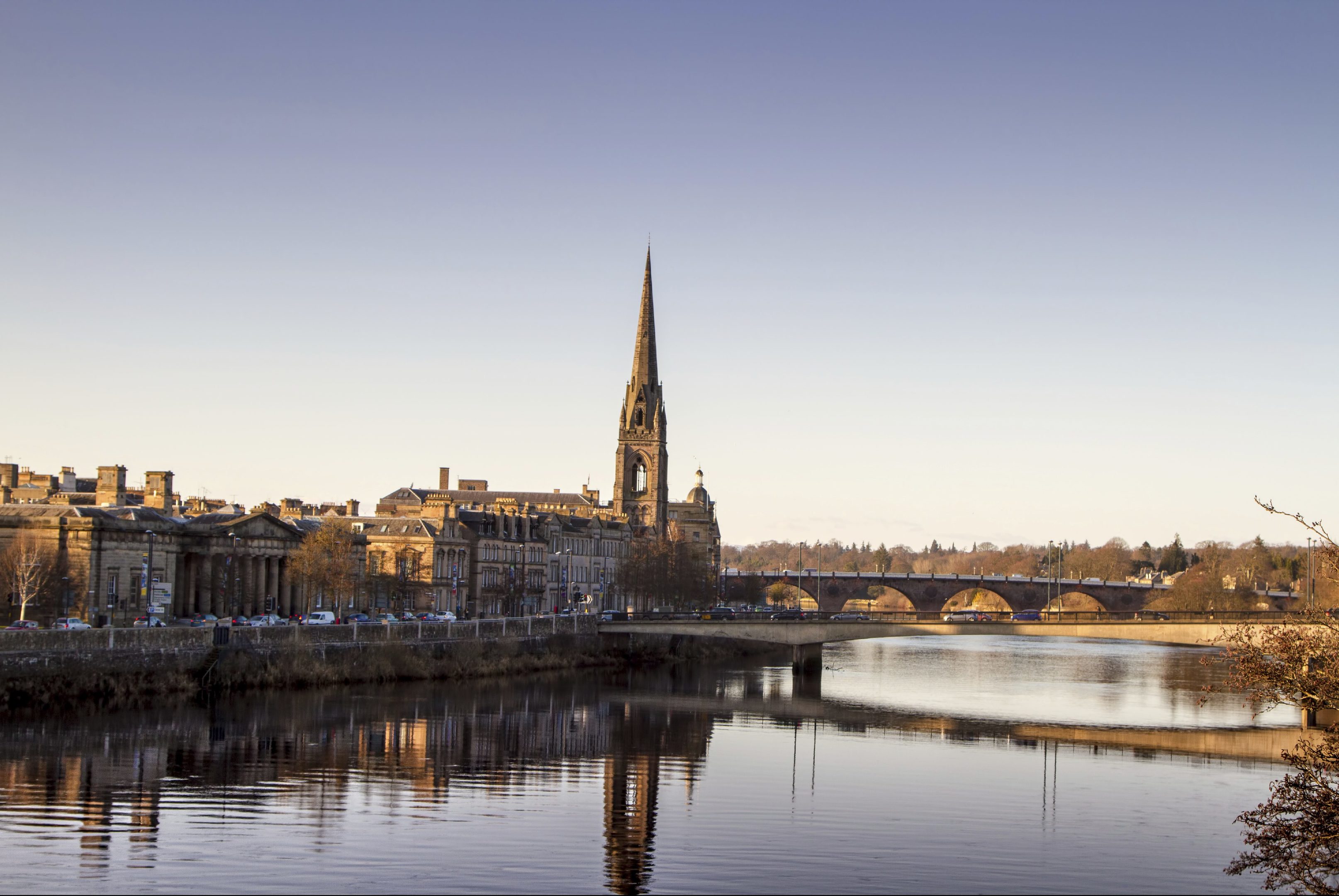A ground-breaking energy project which was designed to heat hundreds of homes, businesses and schools across Perth has been scrapped.
The radical £8.2 million heat pump plan would have been the first of its kind in Scotland and involved drawing power from the River Tay to generate thermal energy.
Perth and Kinross Council’s previous SNP administration announced the scheme in 2015 and insisted it could go some way to slashing energy bills across the city.
The project was to be partly paid for through the Scottish Government-backed Local Energy Challenge Fund, but the local authority missed a crucial deadline for funding in March 2018.
Now the scheme has been scrapped by the new Tory-led administration, The Courier can reveal.
A report prepared by interim head of economic development Tom Flanagan and investment manager Serge Merone said the heat pump project had been reviewed following scrutiny of its business case.
Instead the “Eco-Innovation” hub building at city’s Food and Drink Park, which was due to house the carbon-free technology, will now be used for a “Future Factory” initiative, a partnership with Zero Waste Scotland which will create industrial and manufacturing space for environmental projects.
Local Conservative councillors had previously spoken out against the heat pump plan.
Ian Campbell, now council leader, said at a meeting in October 2016 that he did not believe the project would ever happen.
Mac Roberts, who represented the Carse of Gowrie ward, said at the time: “Spending £25,600 of taxpayers’ money, per house, on this heating system which would save each household a maximum of £200 per annum, is the economics of the mad house.”
Former SNP councillor John Kellas, who served as convener of the enterprise and infrastructure committee, said he was disappointed the project had been dropped.
“It’s disheartening,” he said. “If this was allowed to run to phase two, we would have seen real benefits spread further across the city. It would have helped one of the areas of Perth which has been most affected by fuel poverty.
“And I believe this kind of technology would have been able to attract more industry into Perth.”
Mr Kellas said: “This move is very disappointing and, I would say, slightly churlish.”
A similar £12 million scheme is now being developed at Clydebank.
Heat pump technology was described by then energy secretary Ed Davey as “game changing” when the UK’s first system was installed in the River Thames in 2014.
But anti-windfarm campaigners had questioned the technology, claiming it was unlikely to be a workable alternative to turbines.










